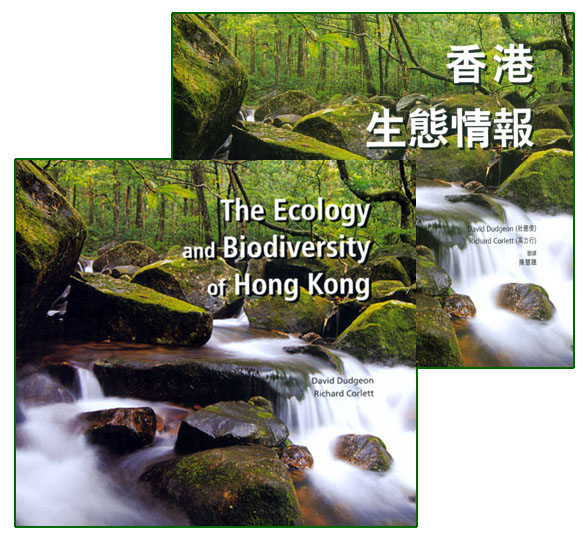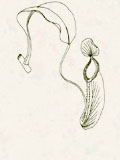
|
|
Book Reviews (pdf)
| Field Guide to the Drangonflies of Hong Kong 2nd Edition | |
| Hong Kong Butterflies | |
| The Ecology and Biodiversity of Hong Kong |
The Ecology and Biodiversity of Hong Kong (pdf)
by David Dudgeon and Richard Corlett, 336 pages, softcover. Joint Publishing (HK) Ltd., Hong Kong, 2004
Don’t be fooled by the title. This book is in fact Hills and Streams Mk 2: New Improved Formula. It has been published in collaboration with AFCD (what’s come over AFCD these days? They are scattering new books around like confetti) but is still authored by the same two academics – Hong Kong’s most distinguished terrestrial ecologists – who wrote the original.
Hills and Streams: An Ecology of Hong Kong was published in 1994 by Hong Kong University Press, and ran to some 234 pages. That this revised edition is some hundred pages longer is testimony to the vast amount of new information on Hong Kong’s terrestrial ecology that has become available in the ensuing decade (although it is also testimony to the fact that there are a lot more photographs in the new book). It is no coincidence that the Department of Ecology & Biodiversity of Hong Kong University, where the authors are based, is also ten years old this year.
 |
The book is essentially structured in the manner of its predecessor, with the rather significant addition of a chapter on biodiversity (another proof of the rapid expansion of our knowledge base since 1994), and takes the reader, through a series of logical chapter progressions, to an elegant synthesis of the current state of published knowledge on the territory’s ecology and biodiversity. It should be essential reading for all undergraduate and graduate students in the DEB, and indeed for anybody who is interested in the natural history of Hong Kong. There certainly isn’t any comparable text to which the student or lay person can turn.
Naturally enough, in a book of such sweeping scope, the approach has to be selective to some extent, and there are no doubt omissions of fact or subject matter which will frustrate some readers. My own main gripe is with the chapters on Biogeography and Seasonality. The authors exercise themselves quite strenuously in establishing that Hong Kong is tropical, whilst stating that "The real questions are: how does the biota of Hong Kong differ from that of land areas to the north and south, and what accounts for these differences?" These are certainly very interesting questions, but the authors could have answered them far more illuminatingly than they have done. For example, much information is given on seasonality and breeding of animals in Hong Kong, but little attempt is made to put this into perspective by discussing how such patterns differ in well-studied areas, having partial species overlap with Hong Kong, to the north and south of here (e.g. warm temperate Japan and equatorial Singapore). I would like to have seen a more concerted and detailed effort to place Hong Kong in its regional biogeographical context.
I have one or two other minor quibbles - there is not enough about upland grassland and shrubland (surely the most extensive terrestrial habitat in Hong Kong); the authors’ brief remarks on this major habitat are largely restricted to a discussion of the effects of hill fires. And I am mystified by the comparison with the British Isles, which is made on more than one occasion in the chapter on Biodiversity. Comparison with a remote archipelago in northwest Europe, having a depauperate post-glacial fauna, may occur naturally to the two authors, both of whom have British origins, but is obscure, arbitrary and, frankly, irrelevant for anyone from Hong Kong.
It is easy, and perhaps rather trivial, to nit-pick in this manner. The bottom line is that this is an immensely valuable book, into which much thought and research endeavour has been poured, and which we should be grateful to be able to put on our bookshelves.
Graham Reels
|
|
P.22 |
|
Porcupine! |
 Copyright © 2000 |
